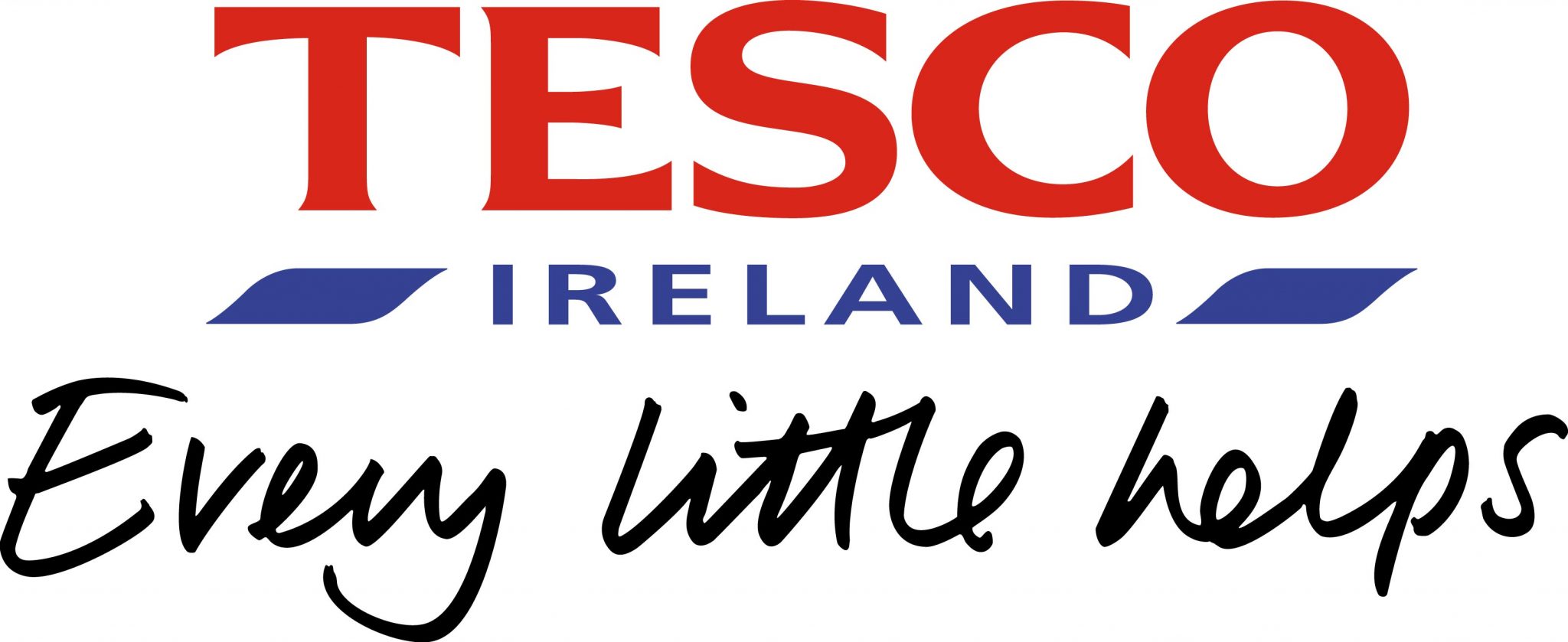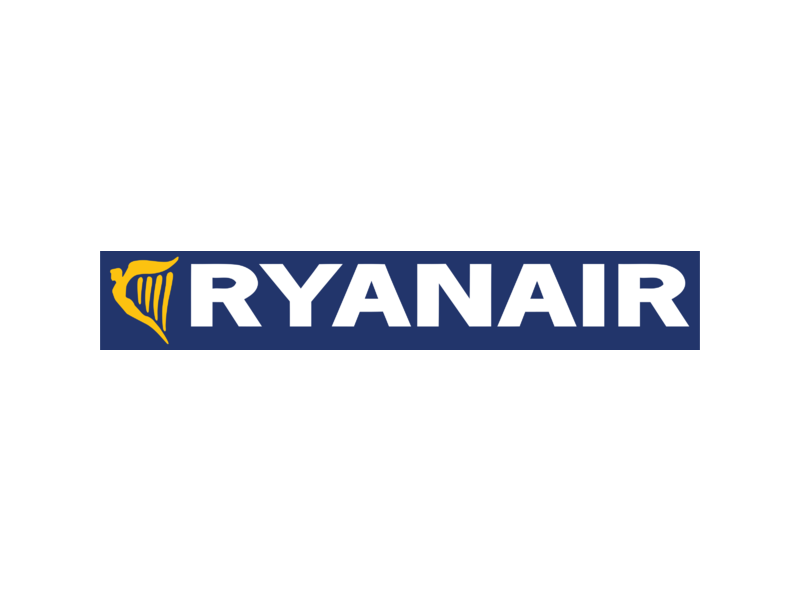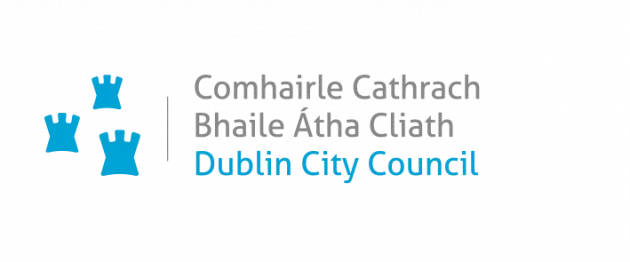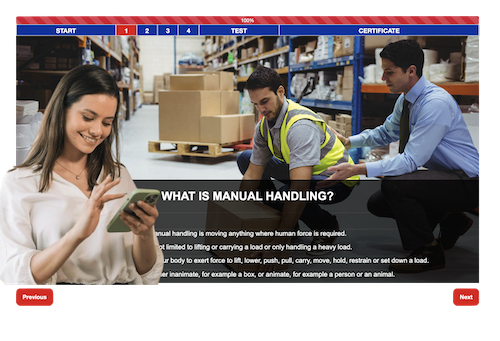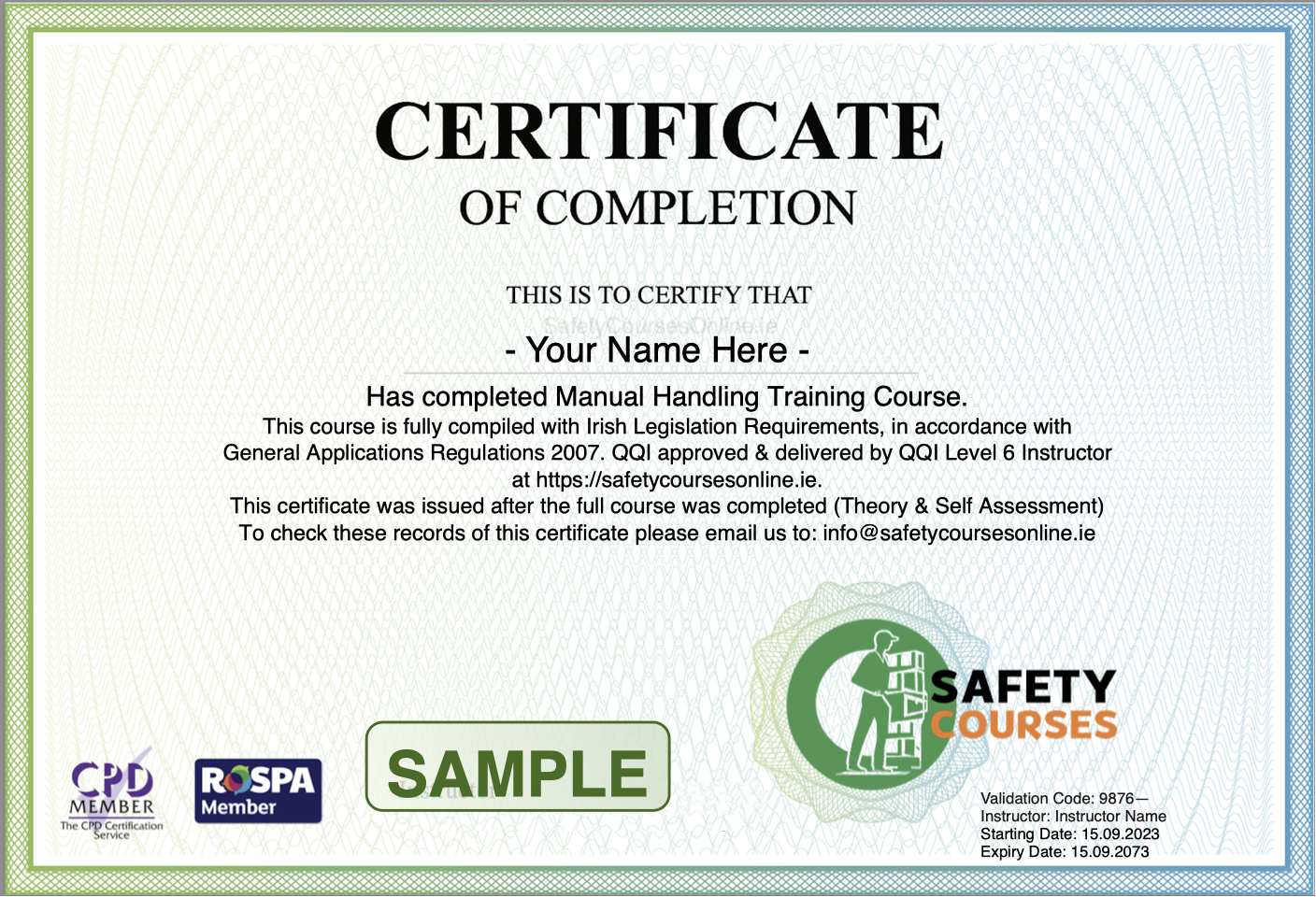
Manual Handling
e-Learning Course
e-Learning Course
 Duration: 45 minutes
(Approx)
Duration: 45 minutes
(Approx)
 Certificate valid for: 3
years
Certificate valid for: 3
years
QQI
CPD
HSE

Only €39
MORE INFO
BUY NOW
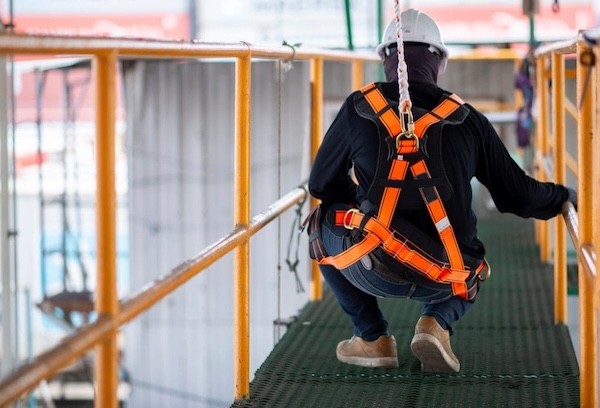
Working at Height
e-Learning Course
e-Learning Course
 Duration: 2 hours (Approx)
Duration: 2 hours (Approx)
 Certificate valid for: 3
years
Certificate valid for: 3
years
QQI
CPD
HSE

Only €39
MORE INFO
BUY NOW

Abrasive Wheels
e-Learning Course
e-Learning Course
 Duration: 2 hours (Approx)
Duration: 2 hours (Approx)
 Certificate valid for: 3
years
Certificate valid for: 3
years
QQI
CPD
HSE

Only €39
MORE INFO
BUY NOW
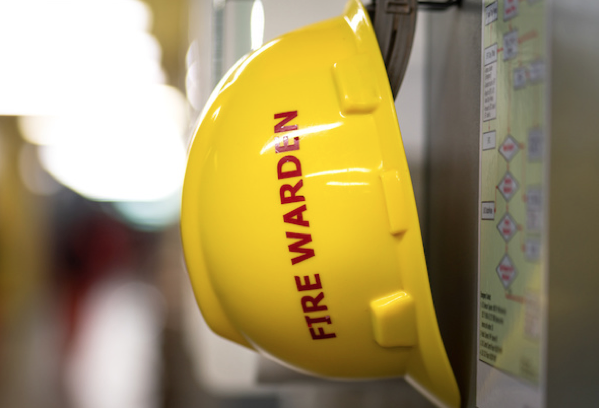
Fire Warden
e-Learning Course
e-Learning Course
 Duration: 2-3 hours (Approx)
Duration: 2-3 hours (Approx)
 Certificate valid for: 3
years
Certificate valid for: 3
years
CPD

Only €39
MORE INFO
BUY NOW
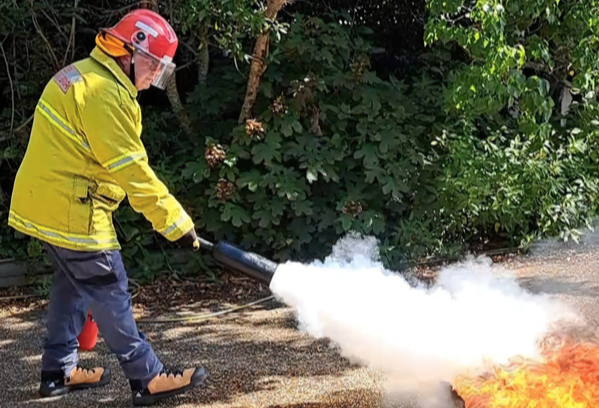
Fire Extinguisher
e-Learning Course
e-Learning Course
 Duration: 2-3 hours (Approx)
Duration: 2-3 hours (Approx)
 Certificate valid for: 3
years
Certificate valid for: 3
years
CPD

Only €39
MORE INFO
BUY NOW
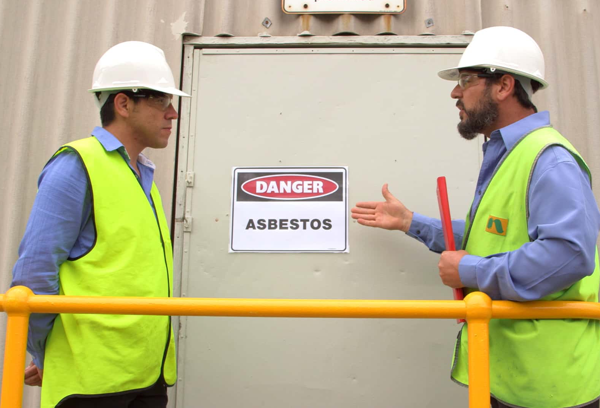
Asbestos Awareness
e-Learning Course
e-Learning Course
 Duration: 2-3 hours (Approx)
Duration: 2-3 hours (Approx)
 Certificate valid for: 3
years
Certificate valid for: 3
years
CPD

Only €39
MORE INFO
BUY NOW
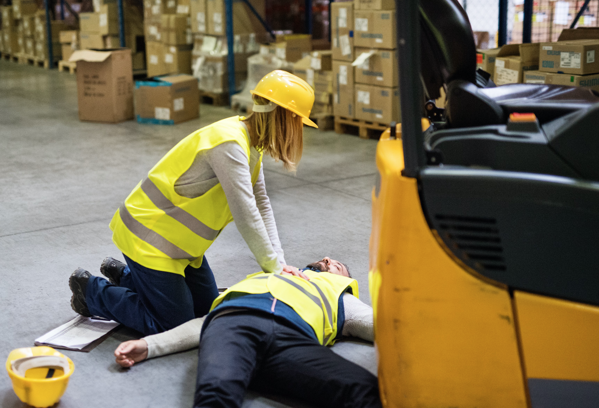
Workplace First Aid
e-Learning Course
e-Learning Course
 Duration: 2-3 hours (Approx)
Duration: 2-3 hours (Approx)
 Certificate Validity: 2
Years
Certificate Validity: 2
Years
CPD

Only €50
MORE INFO
BUY NOW

Workplace Health & Safety (Level 2)
e-Learning Course
e-Learning Course
 Duration: 2-3 hours (Approx)
Duration: 2-3 hours (Approx)
 Certificate Validity: 2
Years
Certificate Validity: 2
Years
CPD

Only €50
MORE INFO
BUY NOW

Office Health & Safety
e-Learning Course
e-Learning Course
 Duration: 1-2 hours (Approx)
Duration: 1-2 hours (Approx)
 Certificate valid for: 3
years
Certificate valid for: 3
years
CPD

Only €39
MORE INFO
BUY NOW

PPE - Personal Protective Equipmen
e-Learning Course
e-Learning Course
 Duration: 1-2 hours (Approx)
Duration: 1-2 hours (Approx)
 Certificate valid for: 3
years
Certificate valid for: 3
years
CPD

FREE course for our customers
MORE INFO
BUY NOW

Food Hygiene & Safety for Retail
(Level 2)
e-Learning Course
e-Learning Course
 Duration: 2 h 30 mins (Approx)
Duration: 2 h 30 mins (Approx)
 Certificate valid for: 3
years
Certificate valid for: 3
years
CPD

Only €39
MORE INFO
BUY NOW

Food Hygiene & Safety Manufacturing (Level 2)
e-Learning Course
e-Learning Course
 Duration: 2 h 30 mins (Approx)
Duration: 2 h 30 mins (Approx)
 Certificate valid for: 3
years
Certificate valid for: 3
years
CPD

Only €39
MORE INFO
BUY NOW


